As part of the division’s partnership with the Office of Programs for Exceptional Children and the Virginia Museum of Contemporary Art (MOCA), middle school and high school students have the opportunity to visit MOCA through the museum’s Student Art Start (SAS) program. The instructional field trip, supported by a grant from the Cohen Family Memorial Foundation of Virginia Beach, includes a one-hour tour of a current exhibit followed by a student art project based on artwork seen on the tour.
Great Neck Middle School (GNMS) students and staff were among those who saw Turn the Page: The First Ten Years of Hi-Fructose before it closed at MOCA Dec. 31. The exhibit highlighted work by 51 artists who have been featured in Hi-Fructose magazine during its first 10 years of publication.
“So what makes this piece different than other pieces you have seen?” asked Jonquil Moore, gallery teacher and museum volunteer. “Can you walk into other paintings?”
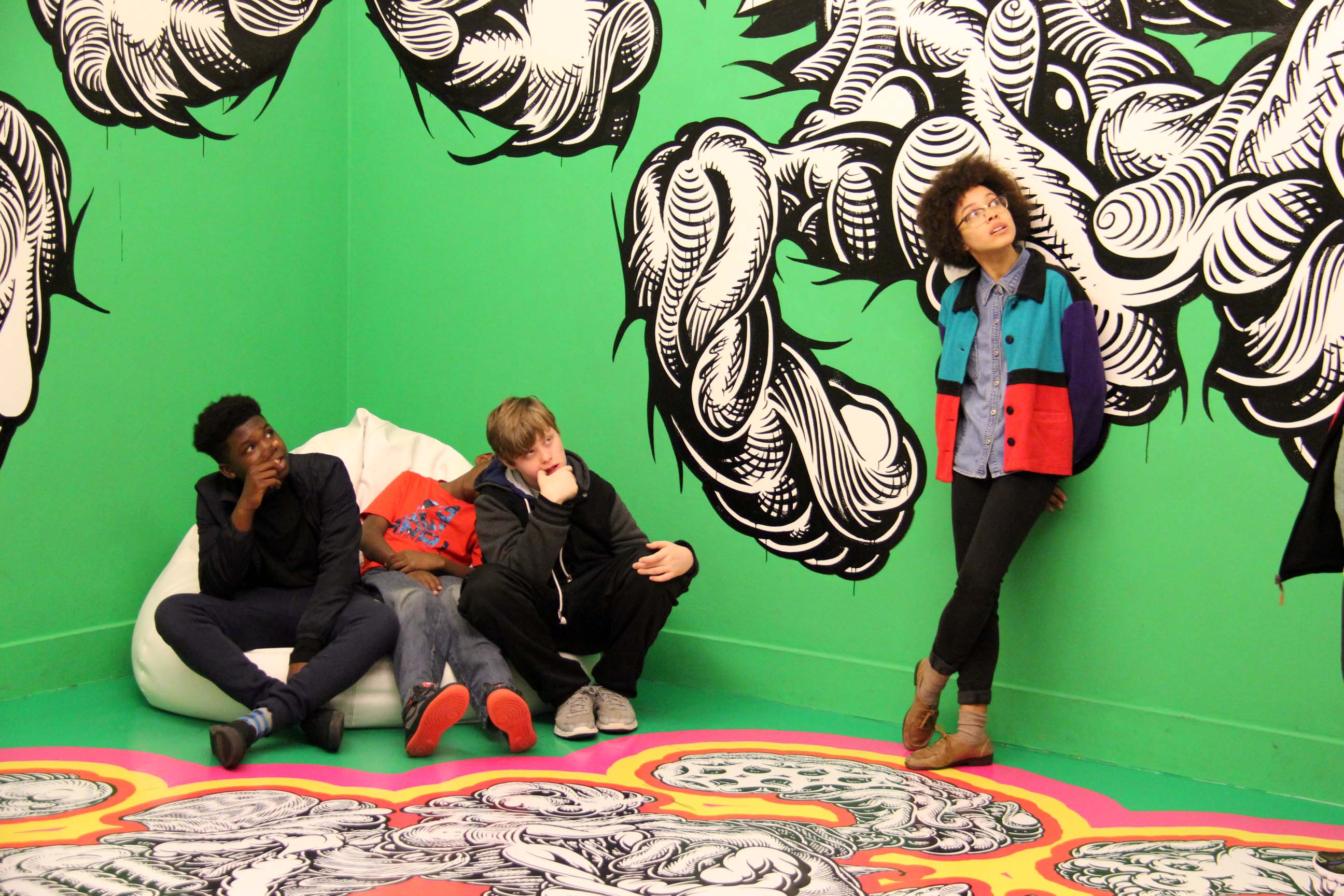
Students and staff turned in awe, admiring the colorful walls and floors of the “Madder Hatter” room created by artist Mark Dean Veca. String lights, paper lanterns and bean bag chairs completed the artwork.
“What do you see?” asked Moore.
“Snakes and bumblebees,” said one student lounging in a bean bag chair.
“I see a snail shell,” responded another student.
“This looks like a flower or a dolphin tail,” added Moore, pointing to a swirl on the painted wall.
“What do you think of the floor?” continued Moore. “Do you notice the similar design? Do you see any similar patterns repeating? Do you notice any repetitive colors?”
They noticed colors, patterns and more.
“They make a lot of connections,” Moore said after the student tour. “They notice the little things that bring up conversation about the art. They notice colors from different movies. They were referencing ‘Ice Age’ and different animals.”

“The great thing is that you don’t have to correct them or tell them, ‘This isn’t about [that],’” said Moore. “You can just let them go with it and they learn their own thing.”
Nearby, gallery teacher Jade O’Day encouraged the group of GNMS students with her to circle the stainless steel artwork by Wim Delvoye.
“It’s a special type of truck,” she said. “Maybe we’ll look at it for a second and see if you can figure out what kind of truck it is. We can walk all the way around it.”
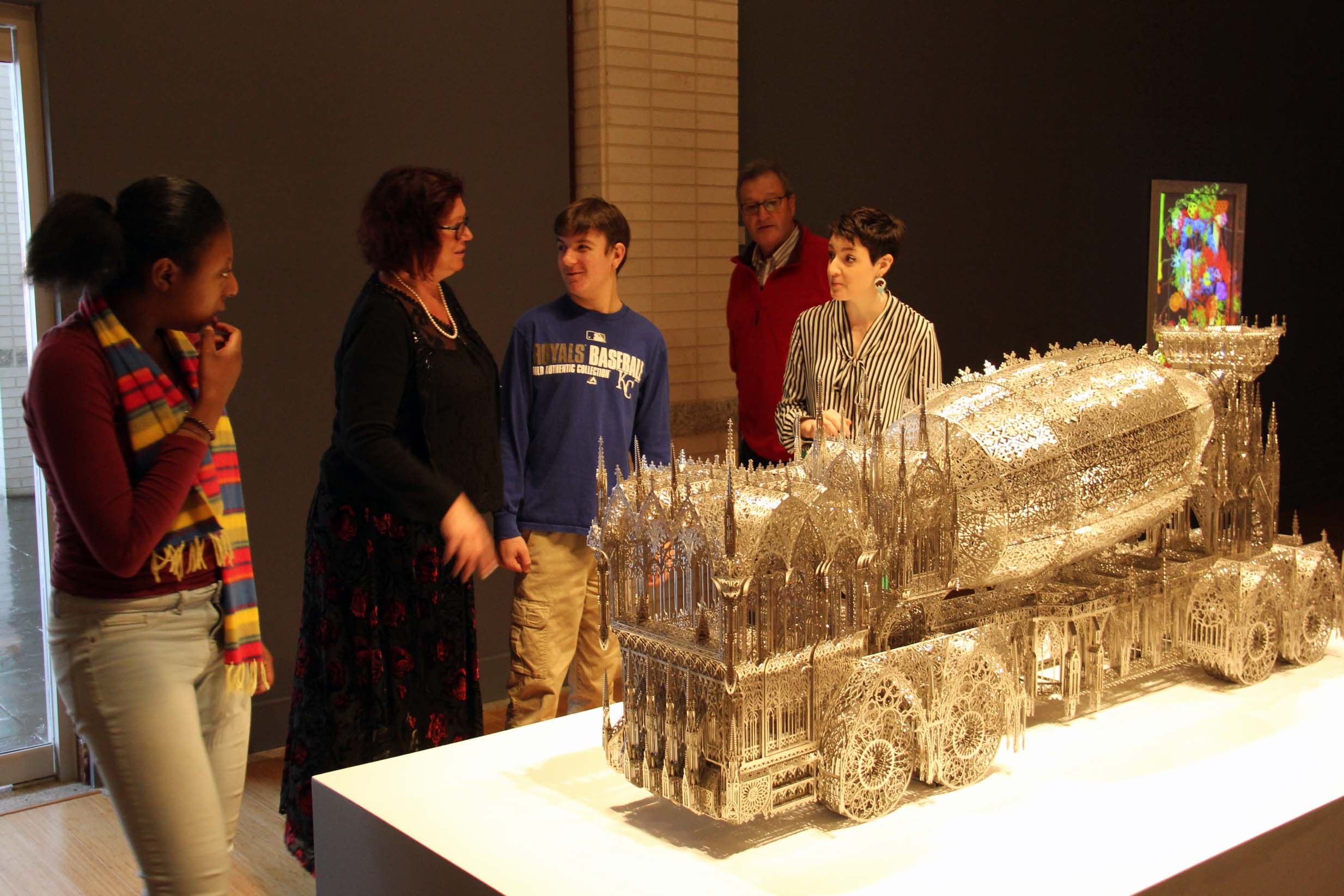
“Castle,” said one student.
“Yes, that’s exactly it! It looks like a castle, doesn’t it?” responded O’Day.
“I think it looks like a church,” observed GNMS teacher Diane Campbell.
“Yes, a Gothic style church,” said O’Day.
“It’s a cement truck,” O’Day told the group. “Have you seen a cement truck like this before? It’s kind of weird, isn’t it?”
She moved to the area where the cement would pour out of a working cement truck.
“Do we think this is functional? Do you think it would hold cement? Do you think we could use this to mix cement?” O’Day asked.
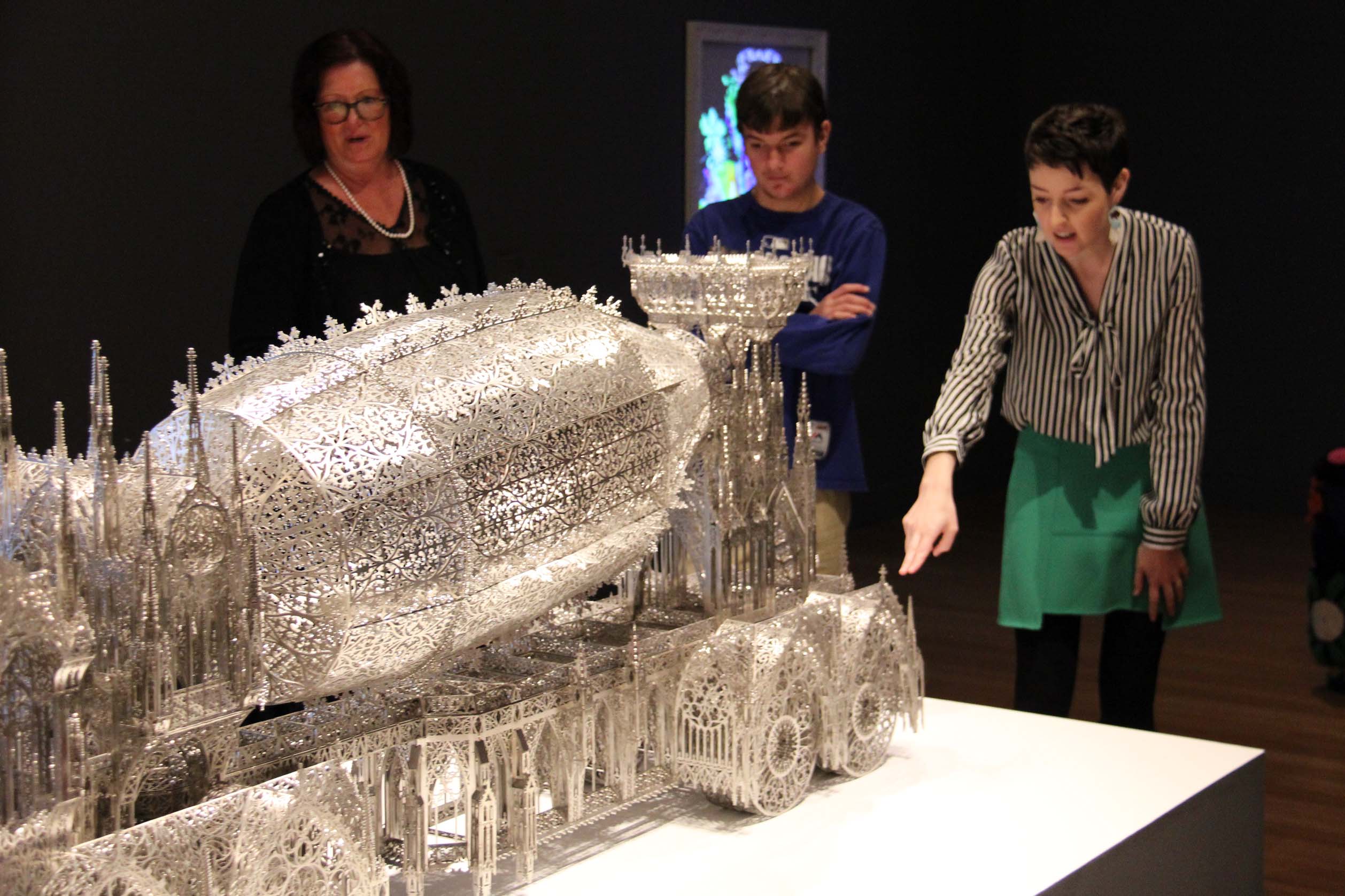
The group was unsure, noticing the intricate, laser-cut design in the artwork.
“It is true that this does actually function,” said O’Day. “The wheels move. The doors open. This spins. If we put cement in it, it looks like it would just slip through and fall down.”
Switching gears from the delicate piece by Delvoye, O’Day asked the students if they wanted to touch an artwork.
Based on their unanimous response, O’Day turned to the couch with a crocheted cover and said, “Let’s go right over here. We can touch it. We can sit on it. What kinds of shapes do we see here?”
“Flowers.”
“Circles.”
The inquiry and curiosity continued throughout the tour as students looked at sculptures, portraits and surrealist art.
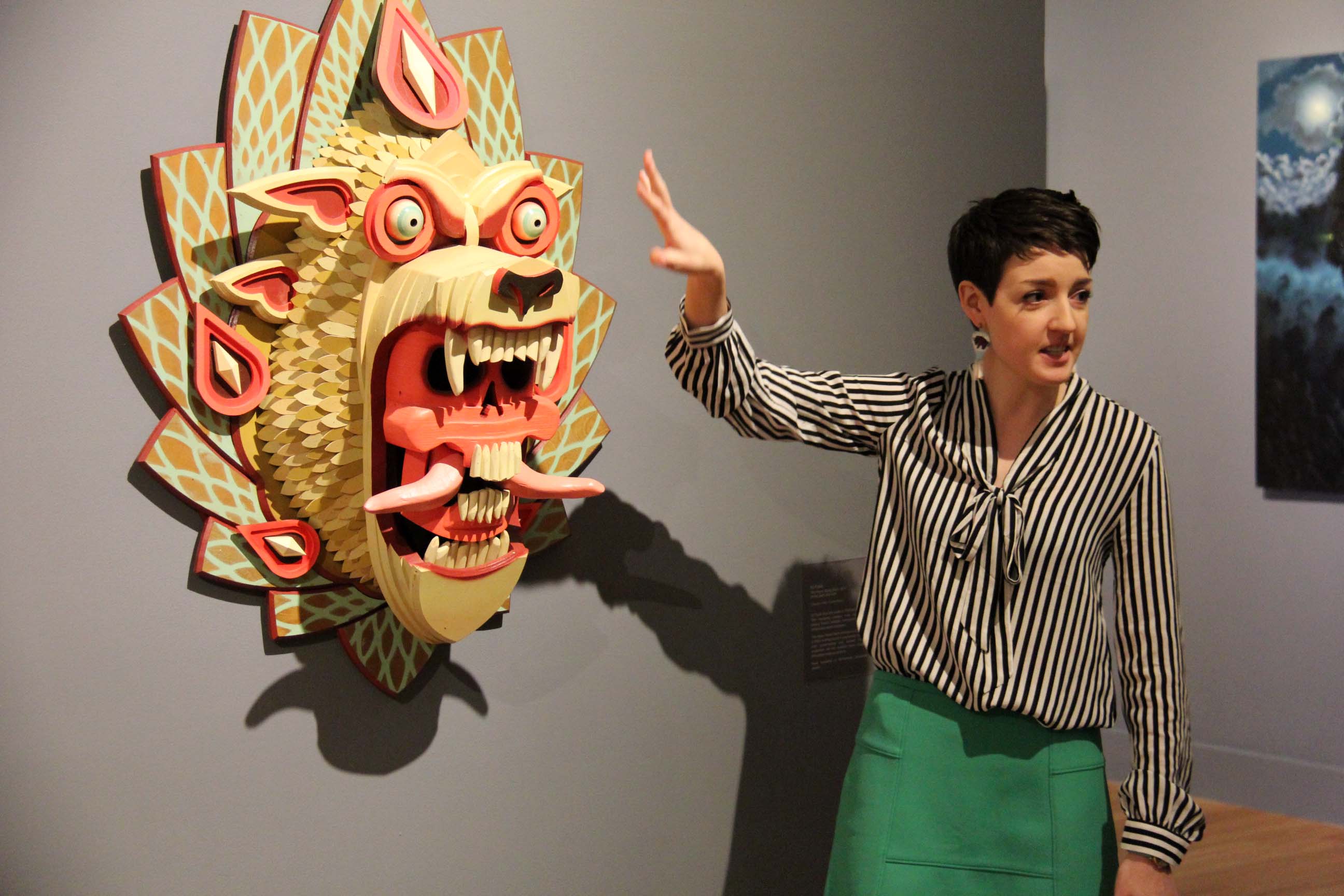
“They always notice the animals and the shapes and the colors that they are seeing,” said O’Day of student visitors. “My goal is trying to have them connect to those pieces in the artwork so the artwork isn’t so scary for them to look at. But that they can have an interaction with it, be a part of it, and also put their own spin on it.”
Putting their own spin on their own illustrations was the field trip’s culminating activity. Art educator Jennifer McDuffie led the students and staff through a step-by-step process to design creatures inspired by Jennybird Alcantra’s oil painting “Creatures of Saintly Disguise.” The artwork features a woman’s body fused with animals and forest vegetation.
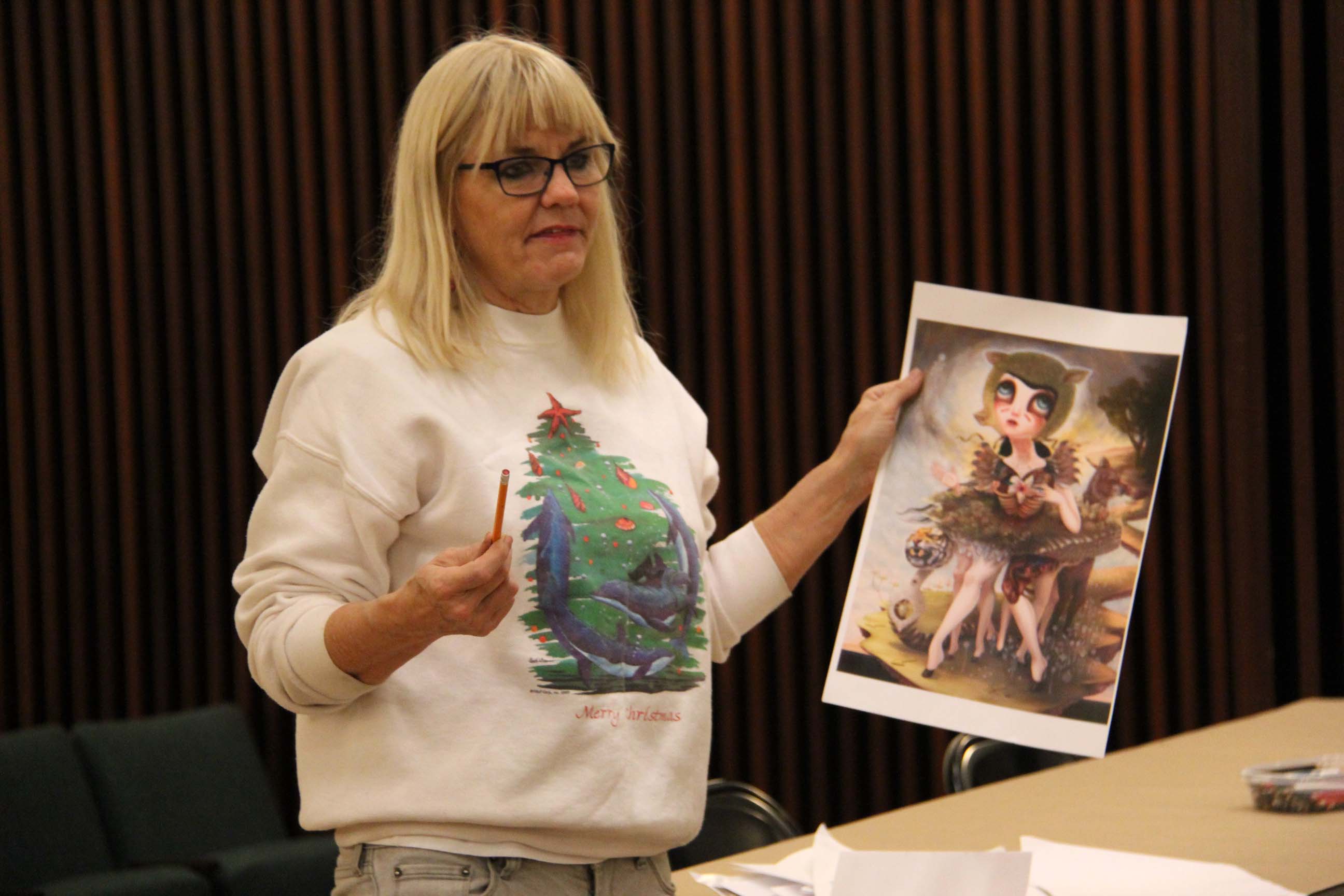
Each student received a piece of paper folded in fourths and added one part of a creature before passing the paper to the person on their left.
They started at the top.
“Think in your mind of some interesting kind of head you would like to draw,” said McDuffie. “It can be anything. It can be an animal, dinosaur, monster, space alien, robot, insect, person – anything you want!”
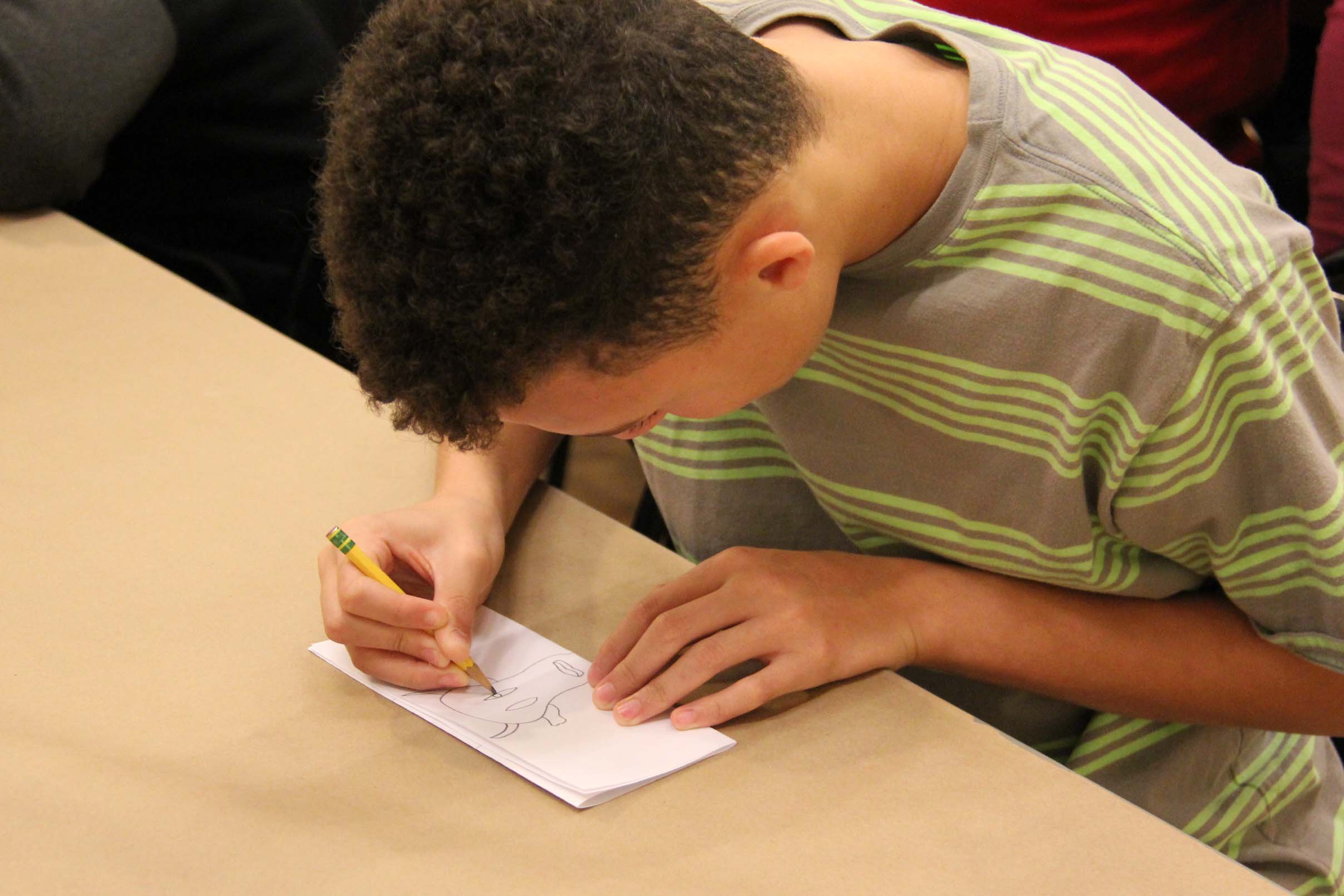
They continued to pass and receive each other’s drawings to add new pieces: arms, legs and feet.
“Don’t peek,” advised McDuffie.
Many peeked and then giggled at the drawings on the hidden quadrants. Some even began to name the creatures after their classmates and teachers.
More laughter.
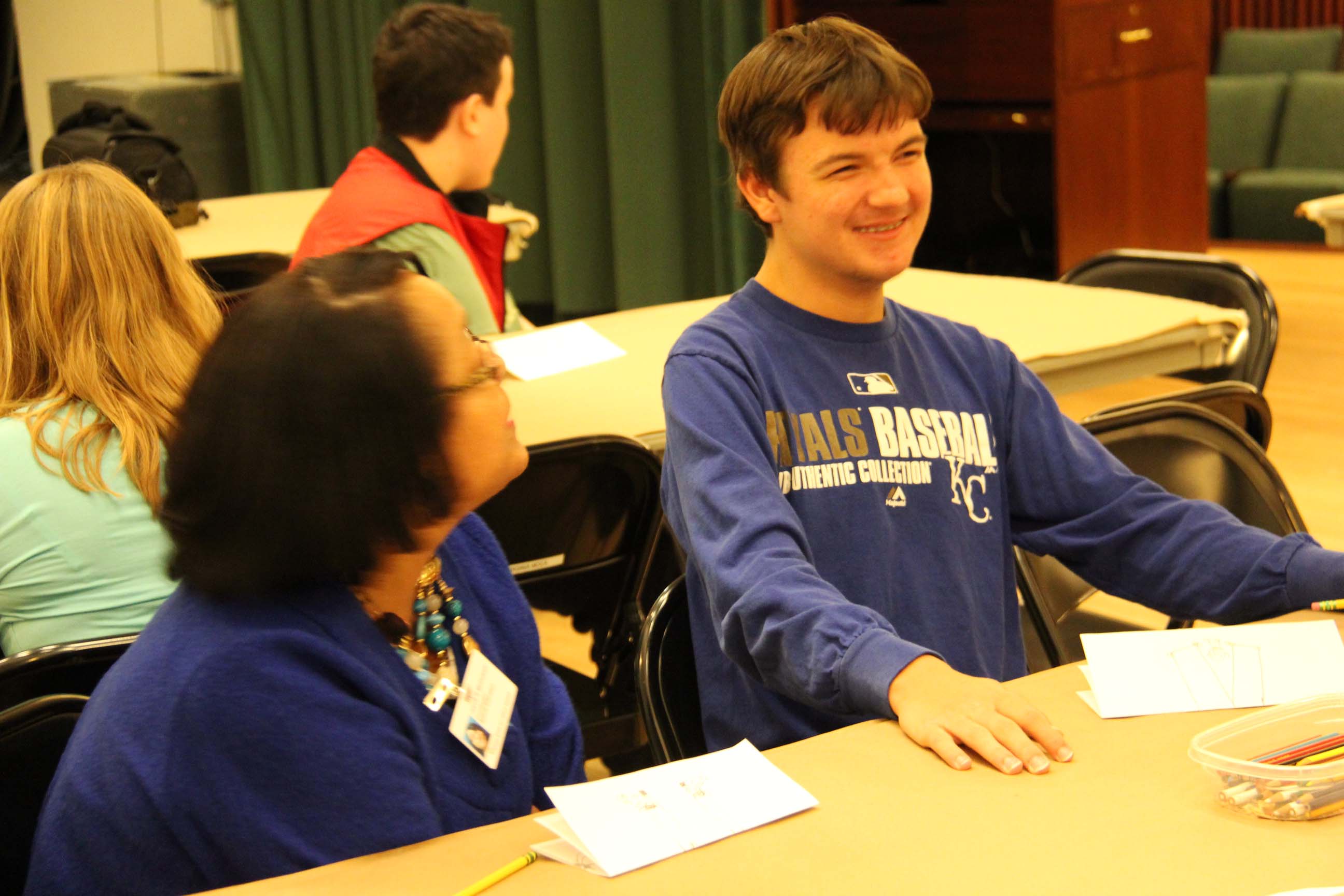
“It’s more fun if you wait until the end to see what it will come out like,” McDuffie told the students. “It’s not going to ruin anything if you look, but, in the spirit of the game, you have no idea how these are going to come out!”
After students received the paper they started with, McDuffie talked with them about using color to unify the creature drawn in multiple pieces.
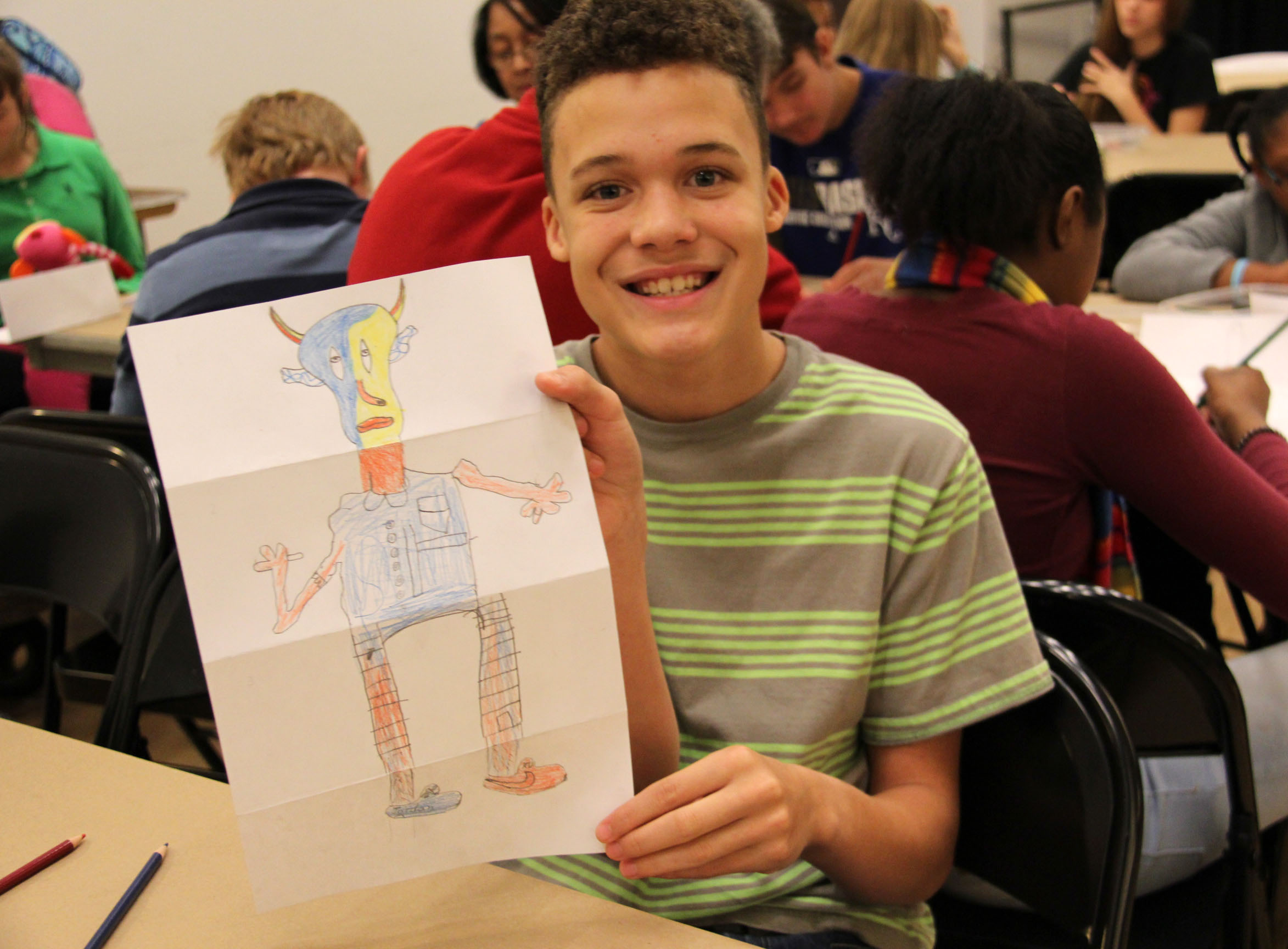
“I think this is absolutely wonderful for my kids. What an experience that they have a private artist giving them lessons on how to do certain parts of the creature they are doing. I think they are taking a lot away from this,” said Campbell.
She noted that a lot of her students don’t speak, but the museum experience inspired some.
“He was so clear today and just so involved,” Campbell said of one student at her art table.
“You see different modalities,” she added noting the artistic talents of another student she observed for the first time. “I didn’t know that. Now I know that.”
Campbell also praised the gallery teachers for make the visit time well spent.
“The students really enjoyed the exhibit this time because it was so bright and colorful. The tour guides were really good and they took their time. They really engaged the children and they asked every single child for their opinion.”
Involving and engaging everyone is always O’Day’s goal.
“I think it’s important to foster this feeling that everyone is welcome to enjoy artwork,” she said.
“It is made for everybody – equally. I think that’s the most important thing: having the students in here viewing the artwork and having the same types of conversations and asking the same types of questions no matter who the children are.”
